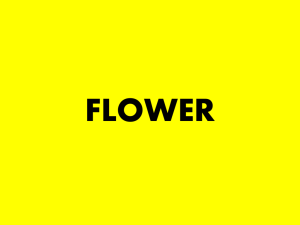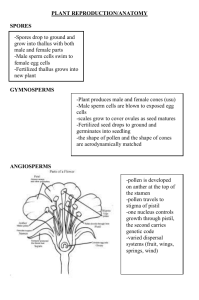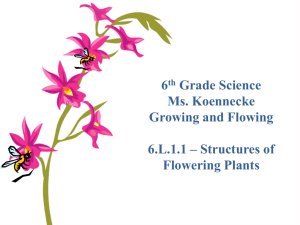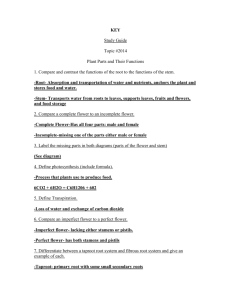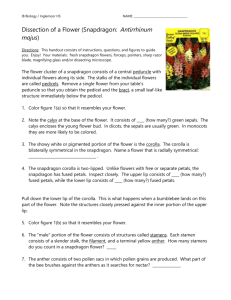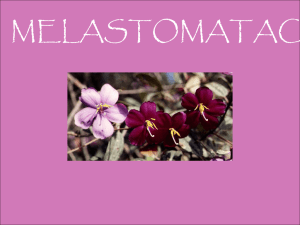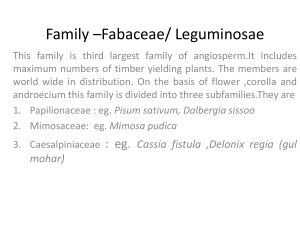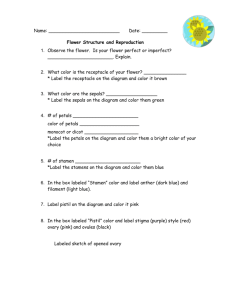plant classification basics
advertisement
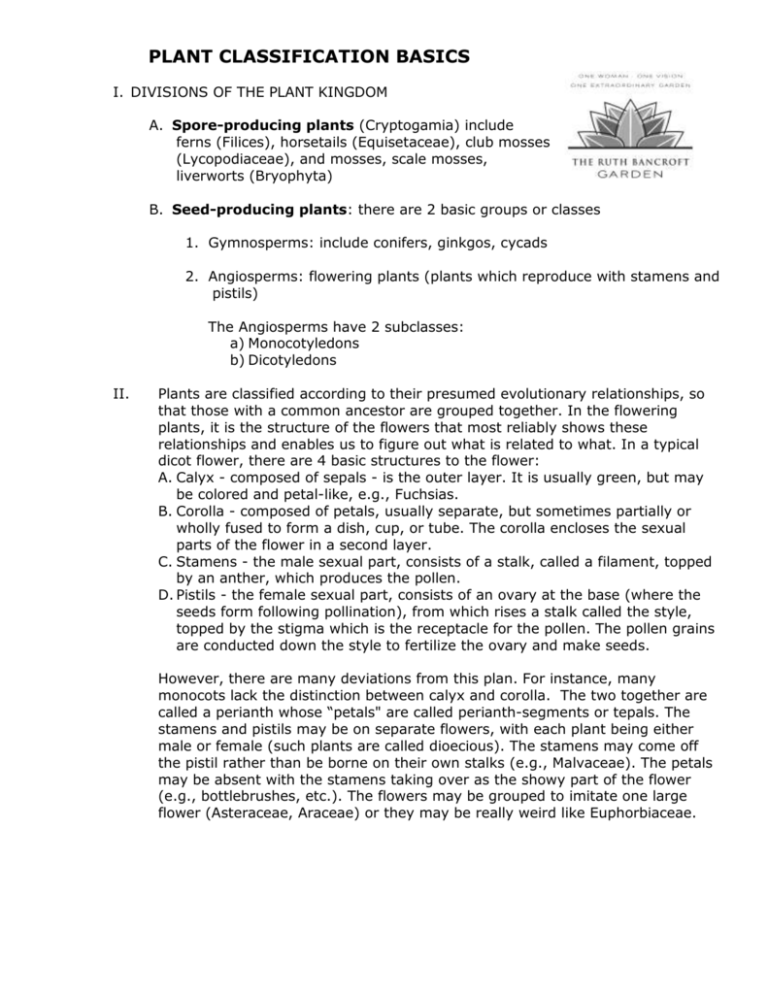
PLANT CLASSIFICATION BASICS I. DIVISIONS OF THE PLANT KINGDOM A. Spore-producing plants (Cryptogamia) include ferns (Filices), horsetails (Equisetaceae), club mosses (Lycopodiaceae), and mosses, scale mosses, liverworts (Bryophyta) B. Seed-producing plants: there are 2 basic groups or classes 1. Gymnosperms: include conifers, ginkgos, cycads 2. Angiosperms: flowering plants (plants which reproduce with stamens and pistils) The Angiosperms have 2 subclasses: a) Monocotyledons b) Dicotyledons II. Plants are classified according to their presumed evolutionary relationships, so that those with a common ancestor are grouped together. In the flowering plants, it is the structure of the flowers that most reliably shows these relationships and enables us to figure out what is related to what. In a typical dicot flower, there are 4 basic structures to the flower: A. Calyx - composed of sepals - is the outer layer. It is usually green, but may be colored and petal-like, e.g., Fuchsias. B. Corolla - composed of petals, usually separate, but sometimes partially or wholly fused to form a dish, cup, or tube. The corolla encloses the sexual parts of the flower in a second layer. C. Stamens - the male sexual part, consists of a stalk, called a filament, topped by an anther, which produces the pollen. D. Pistils - the female sexual part, consists of an ovary at the base (where the seeds form following pollination), from which rises a stalk called the style, topped by the stigma which is the receptacle for the pollen. The pollen grains are conducted down the style to fertilize the ovary and make seeds. However, there are many deviations from this plan. For instance, many monocots lack the distinction between calyx and corolla. The two together are called a perianth whose “petals" are called perianth-segments or tepals. The stamens and pistils may be on separate flowers, with each plant being either male or female (such plants are called dioecious). The stamens may come off the pistil rather than be borne on their own stalks (e.g., Malvaceae). The petals may be absent with the stamens taking over as the showy part of the flower (e.g., bottlebrushes, etc.). The flowers may be grouped to imitate one large flower (Asteraceae, Araceae) or they may be really weird like Euphorbiaceae.


